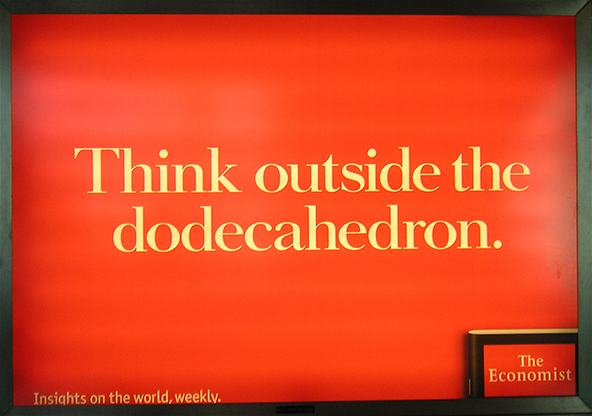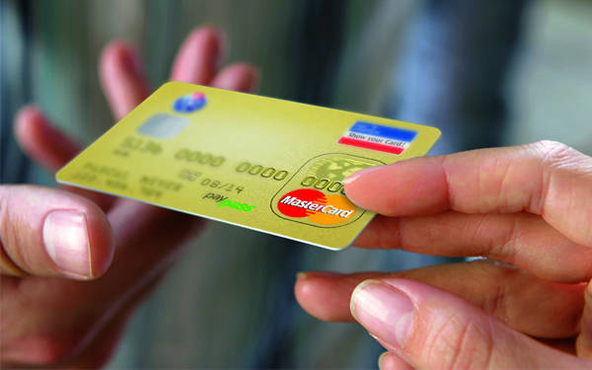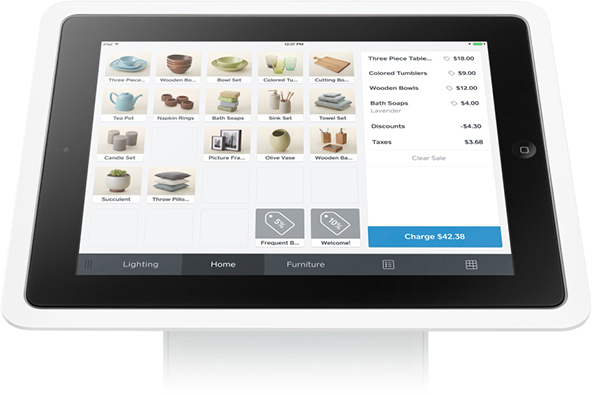On Paul Krugman Scaring the Hell out of Us, The Economist and Europe’s Card Fees

I love The Economist. I read it every day, I believe it is the best thing printed in English and cannot imagine my life without it. It provides a sorely needed sanctuary in a world dominated by extreme views. On the far left we have the brilliant Paul Krugman whose economic analysis of our current predicament and his solution for getting us out of it make perfect sense, but whose views on the role of the state even in a non-zero-lower-bound world, in which we will someday (hopefully) live once again, scare the hell out of many of us. Thankfully, Krugman’s personality is his worst enemy and will ensure that his influence never extends beyond the realm of the already converted. On the right we have The Wall Street Journal’s editorial board, famous Chicago economists and many others who are either unable to come to grips with the current economic reality or are simply unwilling to admit that Krugman has been right all along, making a huge spectacle of themselves along the way (it is true that Krugman is doing all he can to make it extremely difficult for them to convert, but that is no excuse). And then there is The Economist, which, while embracing a small-government world view, acknowledges that in the wake of a severe financial crisis, when the private sector is unwilling to spend, it is the state’s responsibility to step in and fill the gap through massive government spending programs, which should last until the private sector’s deleveraging is done.
I think that 99 percent of the time I find myself in broad agreement with The Economist’s view. But, and you knew a “but” was coming, this week they’ve got something very wrong. In fact, it seems as though the author hasn’t really bothered to think the issue he was writing about through. The issue in question is the European Commission’s proposal to cut the interchange rates on debit and credit cards, of which we wrote last week. The Economist argues that the proliferation over the past few years of new payment processing start-ups like Square and the continuing rise to prominence of other recent entrants like PayPal exert competitive pressure on Visa and MasterCard, which could presumably, on its own, force the two biggest card associations to cut their interchange rates. Well, that makes no sense. Let me explain.
The Square Effect
Let’s first take a look at the impact Square has had on the payments industry. Here is what The Economist has to say on the matter:
The commission’s diagnosis of a competitive failure looks sound but its remedy may have passed its sell-by date. A decade ago it made sense to think of card companies as essential utilities that ought to be regulated like monopolies. Yet over the past few years the payments industry has started to bubble with new entrants. Start-ups like Square in America and iZettle in Europe, for instance, have dramatically lowered the barriers to people wanting to accept card payments. In San Francisco, where Square is based, people now routinely pay their yoga teachers and personal trainers by card instead of cheque.
OK, let’s first briefly summarize the thrust of the EC proposal under consideration: the Commission wants to cap debit interchange rates at 0.2 percent of the transaction amount and credit interchange rates — at 0.3 percent. At present, as The Economist points out, these rates, though varying widely, are much higher: “as high as 1.6% on credit-card transactions in countries such as Germany, and 0.8% in Britain, where card usage is higher”.
OK, but how exactly is the rise of Square and its clones going to put any pressure on Visa and MasterCard to cut their interchange rates? Square cannot possibly be undercutting the networks’ pricing, as The Economist claims later in the piece, because if they did, they’d be losing money on every transaction, which would force them out of business in short order. Why? Because the interchange fees are collected solely by the card issuers and no portion of them goes into the coffers of the processors. Payment processors like Square make money by adding their mark-up to the interchange rates, which are set by Visa and MasterCard. So, whereas Square has had a huge impact on the payment processing sub-industry, the start-up has had no influence at all on the way interchange rates are determined. To the extent to which Square has affected the networks, the effect has been an unambiguously beneficial one. Recently, a senior MasterCard executive was marveling how in a few short years Square had created 2 million brand new merchants for his company!
PayPal Is Different
The PayPal story is more nuanced. On the one hand, we have PayPal Here, the processor’s Square clone, and that part we have just covered. Then there is PayPal’s launch of a brick-and-mortar payment service, and here things get more interesting. The Economist gets that one wrong too, but in a more subtle way. Here is what the author has to say:
More importantly, there is increasing competition for the card-payment networks from new plumbing. PayPal gives consumers the choice of paying using their credit cards or via direct debits from their bank accounts. Pingit, a service launched in Britain by Barclays, a bank, lets customers make payments using their mobile phones. The commission welcomes this competition and is passing some new rules to encourage it. But capping fees risks the worst of all worlds: the margins that start-ups can earn by undercutting the existing card-payment networks disappear, and retailers do not pass their savings on to consumers.
OK, the card networks are indeed very concerned with PayPal’s incursion into brick-and-mortar stores, which began in earnest when the previously online-only payment processor signed a deal with Home Depot, which made it a payment option available at all of the home improvement chain’s stores in the U.S. And Visa and MasterCard have every reason to be concerned, for PayPal, unlike Square, actually is undercutting their pricing. Here is how PayPal does it.
PayPal agreed to subsidize Home Depot’s payment acceptance costs. The retailer got lower processing rates than Visa’s and MasterCard’s interchange rates — the fees PayPal has to pay the networks’ card issuers for each card transaction processed for the retailer. Crucially, however, the processor can actually afford to run such a scheme, because, while about 55 percent of its transactions are funded from its users’ debit or credit card accounts, the rest are funded from the users’ bank accounts. So, as Home Depot is being charged less than the full interchange amount, the processor is losing money on the card-funded portion of its transactions, but on aggregate it is still in the black, because its margins on the transactions funded directly from its users’ bank accounts are huge and in any case enough to more than offset the losses from the bank card transactions. And to make things even better for PayPal, no one else can run such an operation on that scale.
OK, but doesn’t that mean that PayPal is putting pressure on the card networks to cut their interchange rates and that The Economist is right? No, it doesn’t! On the contrary, if Visa and MasterCard lowered their interchange rates, that would reduce the amount PayPal is losing on card-funded transactions, even as its profits from the bank-account portion would be unaffected, leaving the processor in a better position. So, in order to make life more difficult for PayPal, the card networks would have to increase, not decrease, interchange rates, which of course they can’t possibly consider even for a moment.
The Takeaway
We knew and warned on this blog what would take place in the U.S. once the Durbin Amendment took effect and then reality backed us up: retailers did not pass their windfall to consumers and the banks raised fees elsewhere to make up for the fall in revenue. Consumers ended up footing the bill and the same thing will happen in Europe if the EC proposal is accepted. So, yes, cutting interchange rates is a very bad policy, this much I and The Economist agree on. But making the wrong argument just weakens your side’s credibility.
Image credit: Flickr / blmurch.



Concerning Paypal, and its acceptance costs, remember they are uniquely positioned to have the customer set a hierarchy of payment options a charge is settled through: First, the paypal balance, second, ACH, debit or credit card. So the higher incidence of use of paypal balances and ACH to settle charges, the better the acceptance cost mix for paypal, and its end retail client.